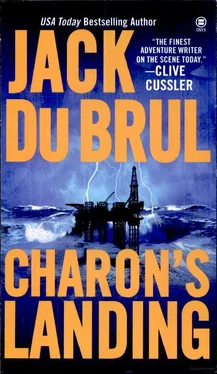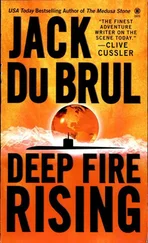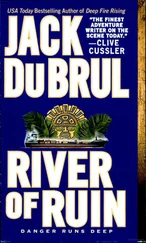Jack Du Brul - Charon's landing
Здесь есть возможность читать онлайн «Jack Du Brul - Charon's landing» весь текст электронной книги совершенно бесплатно (целиком полную версию без сокращений). В некоторых случаях можно слушать аудио, скачать через торрент в формате fb2 и присутствует краткое содержание. Жанр: Триллер, на английском языке. Описание произведения, (предисловие) а так же отзывы посетителей доступны на портале библиотеки ЛибКат.
- Название:Charon's landing
- Автор:
- Жанр:
- Год:неизвестен
- ISBN:нет данных
- Рейтинг книги:5 / 5. Голосов: 1
-
Избранное:Добавить в избранное
- Отзывы:
-
Ваша оценка:
- 100
- 1
- 2
- 3
- 4
- 5
Charon's landing: краткое содержание, описание и аннотация
Предлагаем к чтению аннотацию, описание, краткое содержание или предисловие (зависит от того, что написал сам автор книги «Charon's landing»). Если вы не нашли необходимую информацию о книге — напишите в комментариях, мы постараемся отыскать её.
Charon's landing — читать онлайн бесплатно полную книгу (весь текст) целиком
Ниже представлен текст книги, разбитый по страницам. Система сохранения места последней прочитанной страницы, позволяет с удобством читать онлайн бесплатно книгу «Charon's landing», без необходимости каждый раз заново искать на чём Вы остановились. Поставьте закладку, и сможете в любой момент перейти на страницу, на которой закончили чтение.
Интервал:
Закладка:
“If the bank ends up with my boat after this, I’m going to make damned sure she isn’t in working order when they get her.”
Cook Inlet, Alaska
From the dawn of civilization, man has demonstrated an uncanny aptitude for making use of the common natural elements found near his earliest settlements. But since the time of Sumer and Mesopotamia and ancient Egypt, humans have had few uses for the black sticky resins that bubbled up from deep within the earth. While some civilizations used the tarry substance for road construction and caulking boats, and Egyptian embalmers wrapped bitumen-soaked linen around mummies, the true potential of oil would remain unknown for millennia.
It wasn’t until the middle of the nineteenth century, when the wheels of the Industrial Revolution began grinding together, that man returned to the stinking, slick pits of oil dotting the globe. This naturally skimmed oil was refined to make ideal industrial lubricants. At the same time, commercial whaling fleets were decimating the world’s cetacean population, driving up the prices for whale oil until it was no longer a viable option for illuminating homes and factories. Again an oil derivative, kerosene, stepped in to fill this niche, ringing the death knell for New England’s whalers. For approximately sixty years, as the oil companies refined kerosene, they burned off the waste products, most notably a highly flammable but useless product called gasoline. Untold millions, possibly billions, of gallons were put to the torch.
Except for Edwin Drake’s use of an old brine-well drill in Titusville, Pennsylvania, there were very few innovations in oil exploration and recovery during this time. His simple drilling rig and the collection of surface oil easily kept pace with the growing demand for kerosene. Necessity had no need to nurture invention, until two German engineers, Nikolaus Otto and Gottlieb Daimler, combined their respective inventions: one, a four-stroke internal-combustion engine fueled by gasoline, and the other, a carburetor device that injected a fine spray of fuel into engine cylinders. Daimler’s idea had actually come from his wife’s perfume atomizer.
In conjunction with Edison’s development of the electric light in 1879, the automobile shifted refinery production from kerosene to gasoline. The race was on to supply the unparalleled demand for fuel that kept the new automobiles on the roads.
The oil industry, as we know it today, was born.
By 1901, the modern rotary drilling rig was in use at Spindletop in Texas, and within a year there were nearly four hundred wells in the area. Very quickly, the hunt for oil began reaching out into the oceans. H. L. Williams’ early experiment in drilling for oil from specially built wharves in Summerland, California, led to freestanding drill platforms built on log pilings driven into the silty waters of the Gulf of Mexico. The demand for oil forced companies to push deep into the realm of discovery and invention as well as search geographically. By 1930, a worker could almost walk across Venezuela’s Lake Maracaibo on the huge number of drilling rigs.
The search pushed farther into areas where man was an outsider, an unwanted interloper who, without modern technology, wouldn’t stand a chance of surviving, let alone recovering the huge amounts of oil society was now demanding. The drilling rigs went deeper, one hundred feet, two hundred, a thousand, three thousand. The search would end only when the oil ran out. Yet depth wasn’t the only obstacle needed to be overcome by these offshore platforms.
Such is the capriciousness of nature that she placed some of her greatest oil reserves in her most inhospitable spots: the Persian Gulf, where searing temperatures turn lubricants to water; the Gulf of Mexico, where Africa’s great sandstorms eventually became two-hundred-mile-per-hour hurricanes; the North Sea, where the full fury of the North Atlantic batters the European coastline. And now, oil companies were making their first tentative forays into the ice-choked waters of Prudhoe Bay in the Arctic Ocean, defiantly building structures designed to withstand the crushing pressure of the polar ice sheet.
While every innovation in offshore technology is hailed as the latest, state-of-the-art development and is sure to prove to be the last word in design, it is always eclipsed by something newer and better, usually within just a few months. However, sitting in the mouth of Cook Inlet, anchored in the shallow waters and rising like a city above the dark waters, the Petromax Prudhoe Omega would deservedly carry the banner as the latest and best design in oil drilling and production rigs well into the twenty-first century.
Built as a Tethered Buoyant Platform (TBP), the Omega , as her name implied, was the last word in drilling technology. Her rectangular base, called a template jacket, encompassed nearly three acres and was supported by four floating caissons nearly ninety feet in circumference. Each leg was anchored to the seafloor with five pretensioned catenary mooring lines. She loomed two hundred and seventy feet above sea level to the top of her tallest utility crane and weighed roughly 425,000 tons.
In a line that stretches unbroken from the building of the Great Pyramids up to the modern age, the Petromax Prudhoe Omega represented the latest expression of man the builder and his desire to show both his will and ingenuity.
The helicopter carrying Mercer, Ivan Kerikov, and Jan Voerhoven had made good time rocketing southward from Pump Station Number 5. As the sleek craft headed out over the water, the pilot eased the chopper lower, the whirling disk of its rotors now only fifty feet from the flat surface of Cook Inlet.
“Tides,” he said to an uninterested Kerikov, who sat next to him in the cockpit of the executive helicopter, “that’s the real danger of the Inlet. Oh, sure, you get a few big waves coming up from the Gulf of Alaska and occasionally a tall iceberg in winter, but the big danger is the tides. They’ll rise thirty or more feet in ten hours and produce currents that’ll stop a freighter under full steam. That’s why most cargo is dropped at Whittier and trained into Anchorage, rather than struggle up the inlet.”
The pilot hadn’t shut his mouth since leaving the TAPline pump station, and his inane observations were driving Kerikov mad. Despite the capture of Philip Mercer and the few hours remaining before Charon’s Landing’s imminent success, Kerikov was in a black, foul mood. His stomach was knotted tightly, acids eating away at his insides so fiercely that he could feel the rumble even with the helicopter rattling around him. He feared he was slipping into another rage, one of those mindless blank periods where violence and death lurked.
He fought it grimly, the way a passenger on a rough boat fights seasickness, jaw clenched, mind tuned to anything other than the present surroundings. He felt as if there was another person within him fighting to be free, forcing him to struggle to maintain his own identity. The tension of the past year, of his entire life, was finally tearing him apart. He held on doggedly, refusing to give in, refusing to lose himself to his own madness. If only the simpleton flying the helicopter would shut his mouth.
He jerked his head sideways when the chopper pitched violently, amazed to see blood drooling from the corner of the pilot’s mouth. Kerikov glanced down and saw a matching stain on the back of his hand. He had no recollection of striking the man. The pilot regarded him with shocked fear, and Kerikov smiled in response. He turned to see how his passenger was doing.
Mercer sat between Kerikov’s bodyguard and Jan Voerhoven. He was bound and gagged with silver duct tape, yet there was a defiance to him and a fathomless look in his eyes. As Kerikov watched, Mercer winked, and behind the thick gag, he was sure the geologist was smiling at him. Trussed and under armed guard, totally helpless, Mercer was mocking him.
Читать дальшеИнтервал:
Закладка:
Похожие книги на «Charon's landing»
Представляем Вашему вниманию похожие книги на «Charon's landing» списком для выбора. Мы отобрали схожую по названию и смыслу литературу в надежде предоставить читателям больше вариантов отыскать новые, интересные, ещё непрочитанные произведения.
Обсуждение, отзывы о книге «Charon's landing» и просто собственные мнения читателей. Оставьте ваши комментарии, напишите, что Вы думаете о произведении, его смысле или главных героях. Укажите что конкретно понравилось, а что нет, и почему Вы так считаете.












